How can I engage in e-education?
Each individual should try to use e-learning in the way that is most practicable for him or her. The first step should be to identify the primary problems. You might start by looking for online courses that teach you the dos and don’ts of feeling secure in the online world if you do not feel comfortable and secure when surfing the Internet.
To start learning online, all you need is a smartphone with internet access. Nowadays it is very easy to access content to learn anything you want. On the Internet, with a simple search you can learn how to cook, learn new languages, learn to program, learn to write, in short, learn anything you want. Any user, regardless of experience level, may study new material or expand on information they already have thanks to the world of online learning.
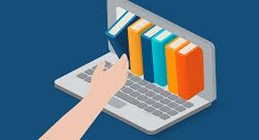 You should start by concentrating and understanding what you want to learn, then you should try to figure out which method you identify with the most. Would you prefer to read the content, or would you prefer someone to explain it to you through videos? Would you rather learn the content through games or through forums where you can chat with other people?
You should start by concentrating and understanding what you want to learn, then you should try to figure out which method you identify with the most. Would you prefer to read the content, or would you prefer someone to explain it to you through videos? Would you rather learn the content through games or through forums where you can chat with other people?
Once you have made that decision you should look at what you want to learn and how you want to do it. For example, if you want to learn how to play an instrument you can look for videos on how to do it. If you want to learn a new language you can look for online games, install apps on your smartphone or look for videos. If you want to learn something more technical, like learning to program, you can search for online content from universities or specialized schools.
When looking for content you should focus on four main points:
- Multiple formats: You should look for multiple formats and vary the way you study the content. This way, you’ll be predisposed to get more learning without it becoming monotonous.
- Active learning opportunities: Active learning is much more effective than traditional learning, and gamification is one of the futures of education. You should look for games or interactive activities of the content you are interested in, as this way learning is promoted without you realizing it.
- Feedback: Looking for content and activities that promote feedback is important. This allows you to know how your learning is progressing and what you should focus on.
- Interaction: interaction is also one of the important points, for sharing knowledge, points of situation and discussion of various topics. You should look for content or platforms where you can interact with other students.
Platforms for online learning
YouTube
 YouTube is an online Platform, where anyone can share videos over the internet. Each user has a channel, where they share videos of whatever they want. On this platform you can find content about almost any content. Through comments you can interact with other learners or with the content creators. Sometimes in the description of each video you can find links to more content or to exercises.
YouTube is an online Platform, where anyone can share videos over the internet. Each user has a channel, where they share videos of whatever they want. On this platform you can find content about almost any content. Through comments you can interact with other learners or with the content creators. Sometimes in the description of each video you can find links to more content or to exercises.
Google Digital Garage
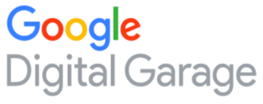 Google Digital Garage offers a variety of courses on varied content that promote personal empowerment. These courses are free and sometimes even offer the possibility of acquiring a certificate. The content is simple and is conveyed in a straightforward manner. In addition, at the end of the course you have to do some exercises to check that you have understood the content. These courses can be taken anywhere and by anyone. They are available through the following link: https://learndigital.withgoogle.com/atelierdigitalportugal/courses
Google Digital Garage offers a variety of courses on varied content that promote personal empowerment. These courses are free and sometimes even offer the possibility of acquiring a certificate. The content is simple and is conveyed in a straightforward manner. In addition, at the end of the course you have to do some exercises to check that you have understood the content. These courses can be taken anywhere and by anyone. They are available through the following link: https://learndigital.withgoogle.com/atelierdigitalportugal/courses
Domestika
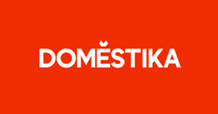 Domestika is an online platform where creative people share knowledge and skills through professional courses. This platform allows you to specialize in creative areas or increase your skills in your favorite hobby. The platform allows you to watch the videos, download them and view them wherever and whenever you want. The audio and subtitles are available in several languages.
Domestika is an online platform where creative people share knowledge and skills through professional courses. This platform allows you to specialize in creative areas or increase your skills in your favorite hobby. The platform allows you to watch the videos, download them and view them wherever and whenever you want. The audio and subtitles are available in several languages.
Duolingo
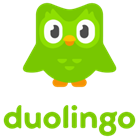 Duolingo is a platform, available in mobile applications and through a website for learning languages. On this platform it is possible to learn languages easily. Learning is done through exercises consisting of reading comprehension and simple conversations. Throughout the exercises you get feedback and progress to the next level according to the knowledge you acquire.
Duolingo is a platform, available in mobile applications and through a website for learning languages. On this platform it is possible to learn languages easily. Learning is done through exercises consisting of reading comprehension and simple conversations. Throughout the exercises you get feedback and progress to the next level according to the knowledge you acquire.
In addition to this platform there are similar ones for learning new languages, such as Busuu and Kultivi.
Coursera
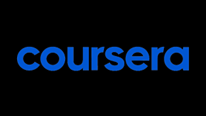 Coursera is an online platform that offers courses that are usually more specialized but accessible to everyone. On this platform the courses come from universities or certified institutions. The courses are taken entirely online and upon completion, it is possible to obtain a certificate. In addition, students are also subjected to knowledge tests to check their learning progression.
Coursera is an online platform that offers courses that are usually more specialized but accessible to everyone. On this platform the courses come from universities or certified institutions. The courses are taken entirely online and upon completion, it is possible to obtain a certificate. In addition, students are also subjected to knowledge tests to check their learning progression.
Besides Coursera, there are other similar platforms such as EdX and Udemy. Some universities also already offer fully online courses open to anyone.
Above were mentioned some of the most commonly used platforms for online learning. However, through simple searches on a search engine, you may obtain unlimited knowledge. You should always keep in mind to have good online surfing practices in order to avoid dangers in the ciber world.
